A human cell: what’s inside?
A cell is a building block of every living organism. This topic describes the cell’s structure, inside processes, and different types: a deeper dive into our body.

Intro: What is a cell? Рow many of them there are in a human body?
A cell is a basic building block of any big organism. It is estimated that a human, for instance, has more than 30 trillion of them!
Сells differ by type, shape, and function, but all of them share a basic structure. Though our bodies have many diverse organs and tissues, they all are made up of cells.
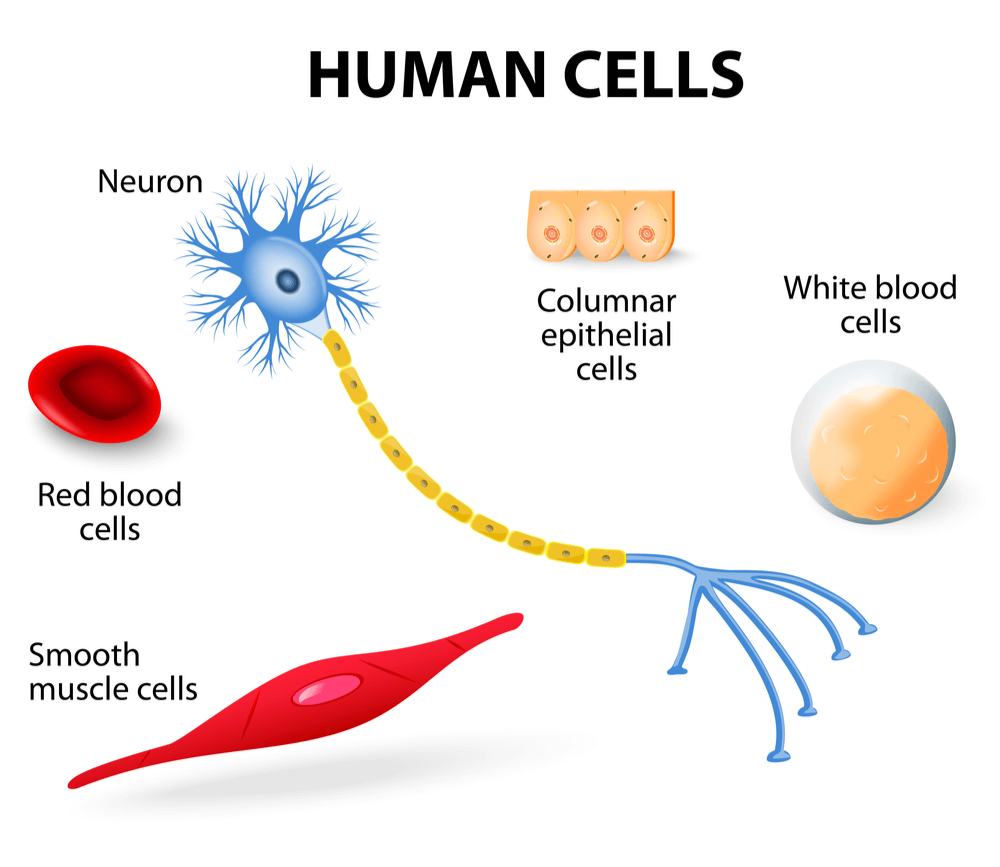
For example, skin protects the body from outside harm—it is made of epithelial tissue. Its cells need to cling together tightly, so they have arectangular shape.
Muscles need to stretch and compress to move the body around, so their cells (myocytes) are elongated.
Neurons inside our brains and in the nervous tissue need to create an expansive communication network, so they grow long fibersto form connections among themselves. Course block Organs and organ systems are the two higher levels of organization at which we, humans, support our life — we are very complex and complicated creatures. However, single-cell organisms (like bacteria) can breathe, eat and reproduce: one cell has everything needed to sustain life. Because of that, we say that cells are the most basic unit of life at the smallest level of organization for living organisms. You can say that every cell is a separate Universe with a million things going on inside to make life possible!
This topic will explore the structure, as well as the variety of processes that happen inside cells. You’ll find out how cells communicate with each other, make new cells, and clean up unwanted stuff. Finally, we’ll take a peek several billion years ago at how cells evolved.
Scientists have to use a microscope to see these tiny things no larger than one-hundredth of a millimeter. Luckily, right now you only need to use your imagination!
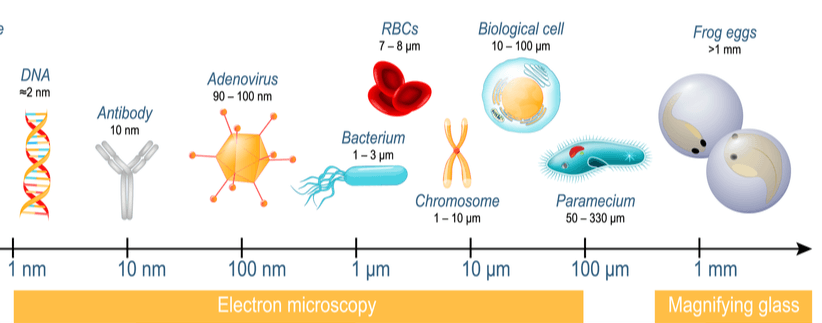
Cell Structure
Imagine a cell as a giant and complex factory—signals to other cells sent and received, molecules consumed and disassembled, new molecules produced and released.
To operate successfully, a factory has to distribute roles across different departments. A cell is no different—its “departments,” called organelles, each has a distinct function.
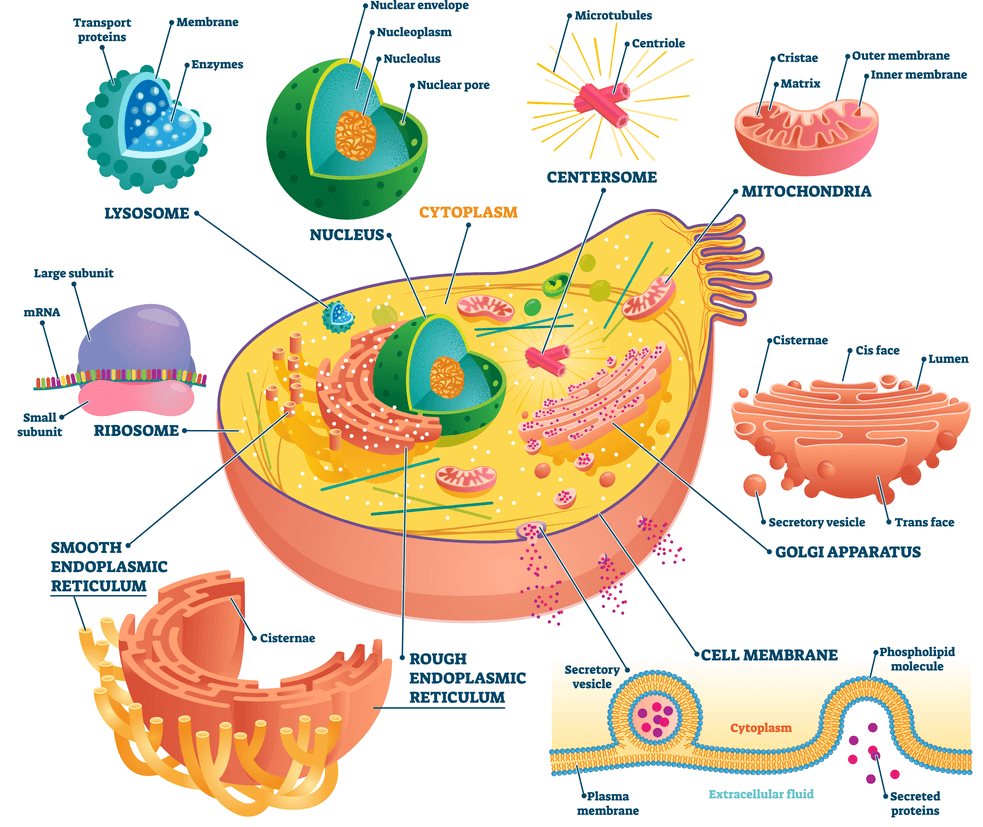
We’ll speak about specific organelles one by one. For now, let’s consider general things.
The insides of every cell (between the organelles) are full of with cytosol. This gel-like liquid that makes it possible for molecules to travel around.
Cytoskeleton holds the organelles together, making the entire structure stable. It is made of densely packed long fiber proteins (shown red and green in the picture).

Just as a factory must have walls around the whole building and between the departments, a cell has a membrane that separates it from the surroundings and covers its organelles.
Chemically, the membrane is made of phospholipids (molecules of fat) arranged into two layers, one facing outside and one inside the cell or the organelle.
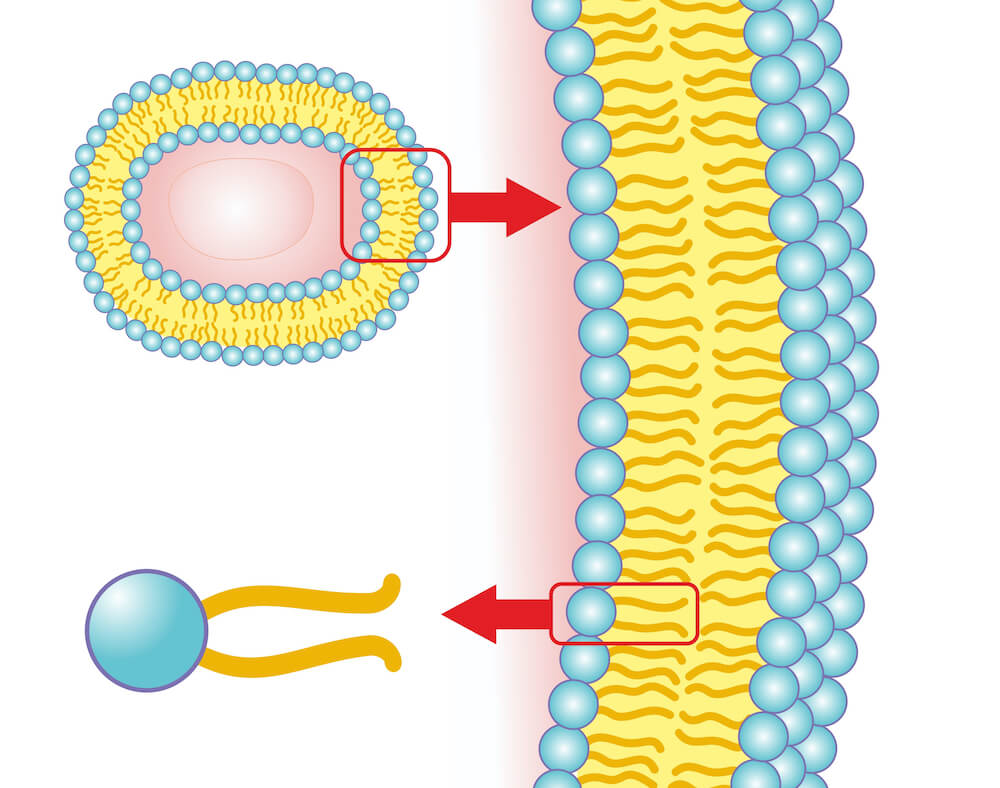
The “head” of a phospholipid molecule is hydrophilic, meaning that it can interact with water—and there are different watery environments inside and outside.
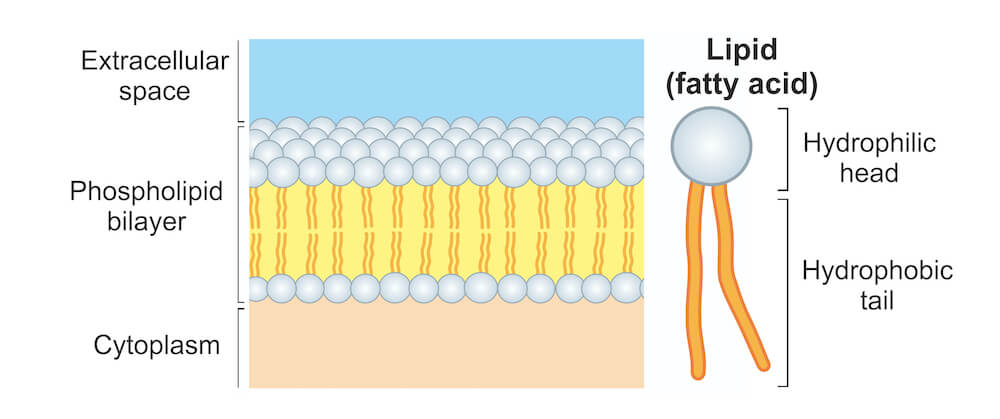
The inside and the outside shouldn’t mix, so the molecules’ tails are hydrophobic—they repel water and interact only with each other, forming a layer almost nothing can pass through.
Additionally, cells of plants, bacteria, and fungi have cell walls outside the membrane. These are made of complex carbohydrates—for example, a plant cell wall is made of cellulose.
Cell walls provide additional protection, make the whole organism more rigid, and sometimes function as an extra filter for what gets inside the cell.
Animals (humans included) don’t have cell walls—our cells only have membranes.
A cell is a basic building block for an organism and the smallest level of life. A cell is like a factory with its functions distributed among various departments. These “departments” are called organelles. The cytosol is the gel-like environment inside the cell, the cytoskeleton is the structure, and the membrane is a wall that separates different environments inside and outside. There is also a thing called a cell wall, but human cells don’t have it.
How do cells interact with the outside?
While the membrane does a good job of keeping the outside of the cell out and the insides in, some things still need to pass through.
Transport channels
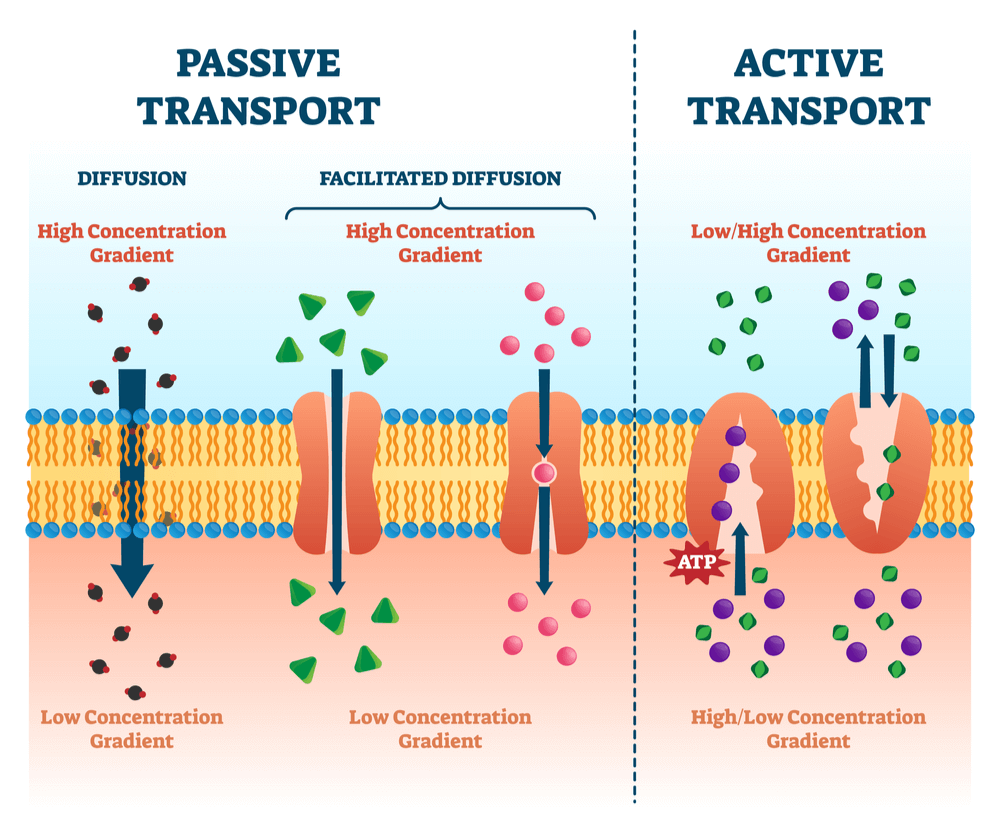
Some molecules smaller in size than the distance between the membrane’s phospholipids can simply squeeze through by diffusion. For other molecules of a certain size, there are “tunnels” in the membrane called passive channels. There are also active channels—“gates” that open and close depending on what the cell needs.
Opening and closing an active channel requires energy—the process consumes a molecule called ATP. We’ll be talking about the ATP molecules later.
Receptors
The transport channels are in fact complex protein structures in the membrane. The other kind of protein structure built into a membrane are receptors—they can grab (scientists say bind to) a specific molecule from the outside environment and send the signal about it to the cell.
When eating, we can feel the taste as receptors in the cells of the tongue bind to the molecules of the food. And receptors are useful in many more ways than that!
For example, you’ve eaten some tasty grapes, rich in glucose. As the food is being processed in your stomach, glucose is released into your bloodstream and needs to be delivered inside the cells, where it will be used for energy production.
Insulin can help with that! Insulin, produced by your pancreas, is a hormone—a specific molecule that acts as a key to the gate. It binds to the cell’s receptors and signals it to open the channel for glucose.
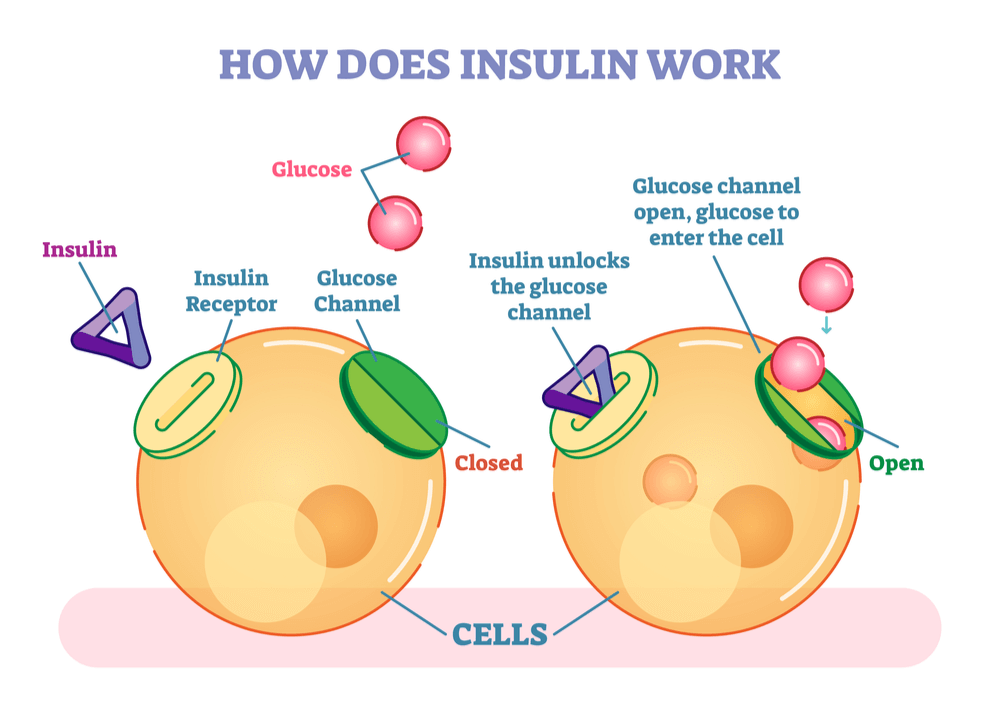
You can find receptors not only on the surface of the cell but also inside—on the membranes of its organelles. For example, a cell can release a specific “order” to its nucleus by releasing signal molecules. These molecules are specifically made to bind with the nuclear membrane receptors.
All in all, receptors play the most important role in cell communication. As you’re reading this, a signal is being passed through your brain cells—and it is possible because receptors unlock the channels for it. Course block
The mechanism can be exploited by viruses—they also bind to receptors and unlock their way inside the cell.
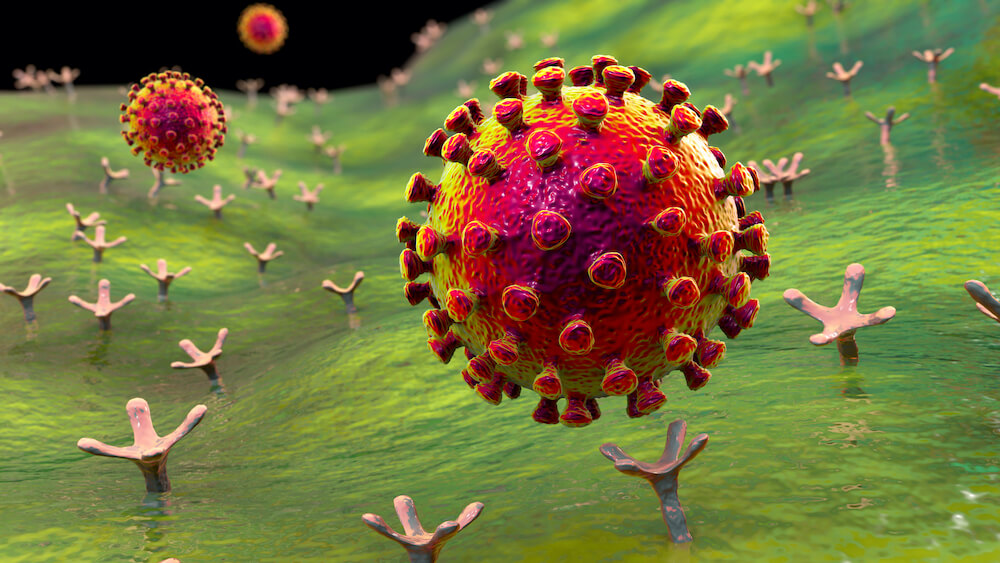
For example, the SARS-CoV-2 virus, responsible for Covid-19, binds to specific receptors in your lung cells.
HIV viruses also bind to specific receptors. In some cases, a person lacks those receptors—and is completely immune to HIV, even if the virus has made it into their bloodstream.
Vesicles
Protein structures (channels and receptors) are not the only way for molecules to get inside and outside of the cells.
Consider this: if you want to send something large and bulky, you use a delivery package. A cell can do the same!
The delivery package for large molecules is called a transport vesicle (vēsīcula meaning “blister” or “bladder” in Latin). It is made from the same lipids as the membrane and can fuse with membranes and other vesicles.
Having traveled inside the cell, a vesicle can fuse with the cell surface membrane and release its contents to the outside. This process is called exocytosis.
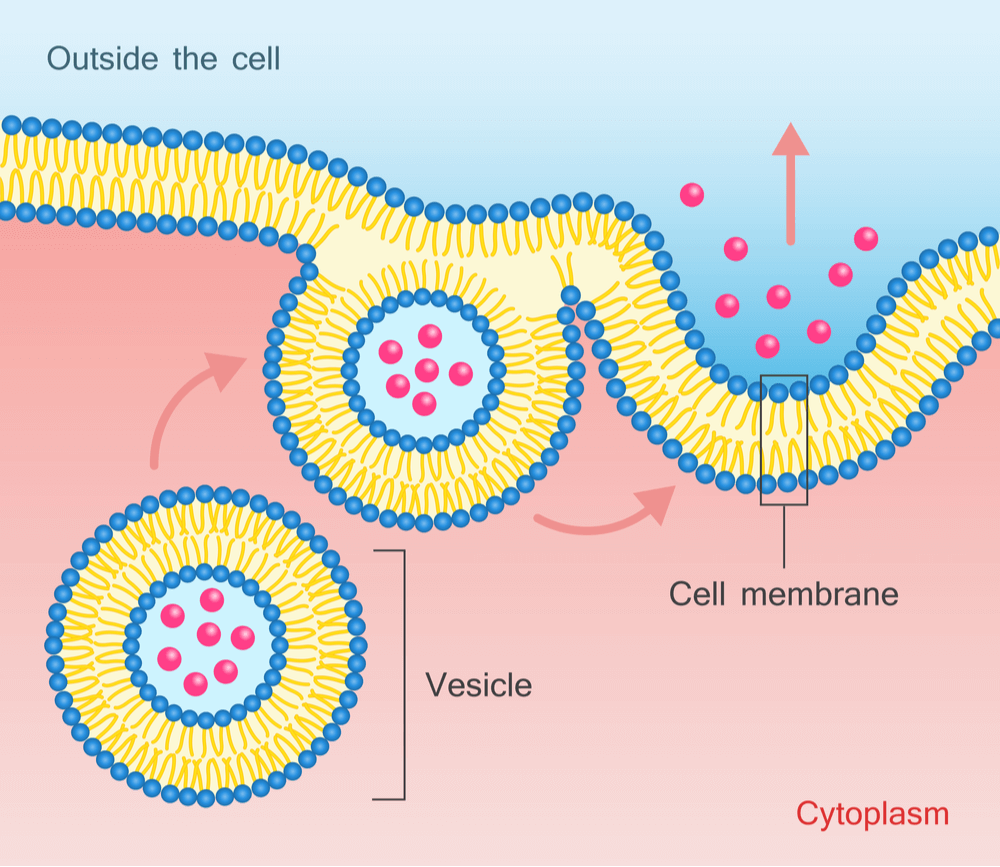
A reverse process, when a vesicle travels through the bloodstream and then fuses with a membrane to release its contents inside the cell, is called endocytosis.
Vesicles can also deliver molecules within a cell between its parts.
